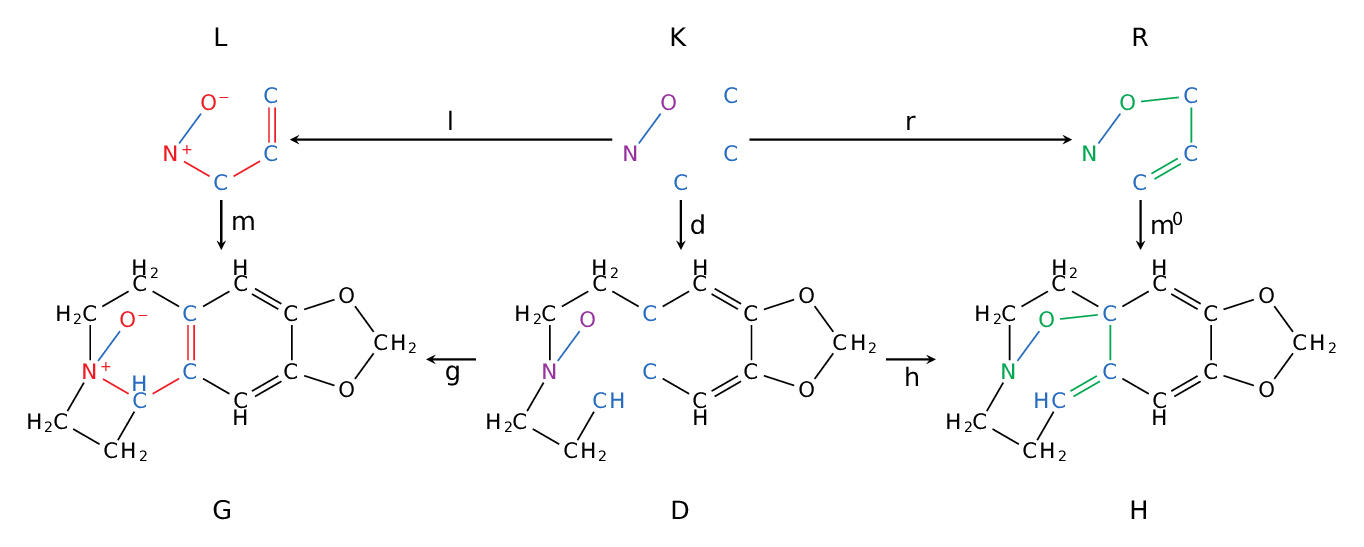Postdocs in Categories and Chemistry
Azimuth 2020-02-24
The University of Southern Denmark wants to hire several postdocs who will use category theory to design enzymes. This sounds like a wonderful job for people who like programming, chemistry and categories—and especially double pushout rewriting. The application deadline is 20 March 2020. The project is described here and the official job announcement is here.
Let me quote a bit from the job announcement:
Several two-year postdoc positions starting 1 July 2020 are available at the University of Southern Denmark (SDU) for research on an exciting project in algorithmic cheminformatics supported by the Novo Nordisk Foundation: “From Category Theory to Enzyme Design – Unleashing the Potential of Computational Systems Chemistry”. We are seeking highly motivated individuals with a PhD in computer science, computational chemistry/biochemistry, or related areas. The ideal candidate has familiarity with several of the following areas: concurrency theory, graph transformation, algorithmics, algorithm engineering, systems chemistry, systems biology, metabolic engineering, or enzyme design. Solid competences in programming and ease with formal thinking are prerequisites.
The project is based on the novel application of formalisms, algorithms, and computational methods from computer science to questions in systems biology and systems chemistry. We aim to expand these methods and their formal foundations, create efficient algorithms and implementations of them, and use these implementations for research in understanding the catalytic chemistry of enzymes.
The Algorithmic Cheminformatics group at the Department of Mathematics and Computer Science at SDU offers a dynamic research environment, comprising two full professors, an assistant professor, and several students. The project includes partnerships with Harvard Medical School (Department of Systems Biology) and the University of Vienna (Institute for Theoretical Chemistry), who will host the postdoctoral researcher for extended visits.
The research group is located at the main campus of SDU, which is located in Odense, the third largest town in Denmark, 1:20 hours by train west of Copenhagen. Denmark is known for its high standards of living, free health care, and competitive salaries. Applicants from outside Denmark are eligible for substantial tax reductions.
For further information contact Professor Daniel Merkle (e-mail: daniel@imada.sdu.dk, phone: +45 6550 2322).
Here’s a bit from the project description. (There’s much more here.)
The proposed project builds on a new and powerful methodology that strikes a balance between chemical detail and computational efficiency. The approach lies at the intersection of classical chemistry, present-day systems chemistry and biology, computer science, and category theory. It adapts techniques from the analysis of actual (mechanistic) causality in concurrency theory to the chemical and biological setting. Because of this blend of intellectual and technical influences, we name the approach computational systems chemistry (CSC). The term “computational” emphasizes both the deployment of computational tools in the service of practical applications and of theoretical concepts at the foundation of computation in support of reasoning and understanding. The goal of this exploratory project is to provide a proof-of-concept toward the long-term goal of tackling many significant questions in large and combinatorially complex CRNs that could not be addressed by other means. In particular, CSC shows promise for generating new technological ideas through theoretical rigor. This exploratory project is to be considered as initial steps towards establishing this highly promising area through the following specific objectives:
• Integrate and unify algorithmic ideas and best practices from two existing platforms. One platform was conceived, designed, and implemented for organic chemistry by the lead PI and his group in Denmark as well as the chemistry partner from University of Vienna. The other platform draws on the theory of concurrency and was designed and implemented for protein- protein interaction networks supporting cellular signaling and decision-making processes by the partner from Harvard Medical School and his collaborators. The combination is ripe with potential synergies as both platforms are formally rooted in category theory.
• Demonstrate a proof-of-concept (PoC) using a biochemical driving project. The goal of this exploratory project is the analysis and design of enzymes whose catalytic site is viewed as a small (catalytic) reaction network in its own right. Such enzymes can then be used in the design of reaction networks.
• Train the next generation of scientists for CSC: This will enable the transition towards a large-scale implementation of our approaches to tackle key societal challenges, such as the development of personalized medicine, the monitoring of pollution, and the achievement of a more environmentally friendly and sustainable network of industrial synthesis.
We argue that CSC is in a position today similar to where bioinformatics and computational biology were a few decades ago and that it has similarly huge potential. The long-term vision is to unleash that potential.
